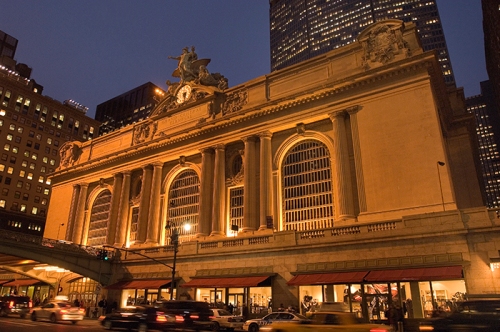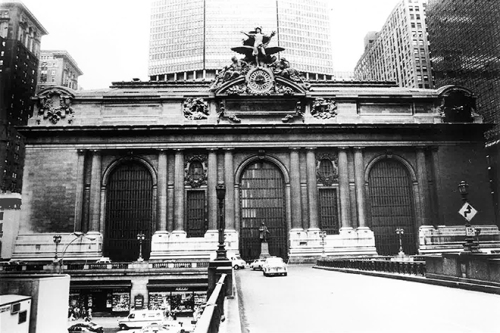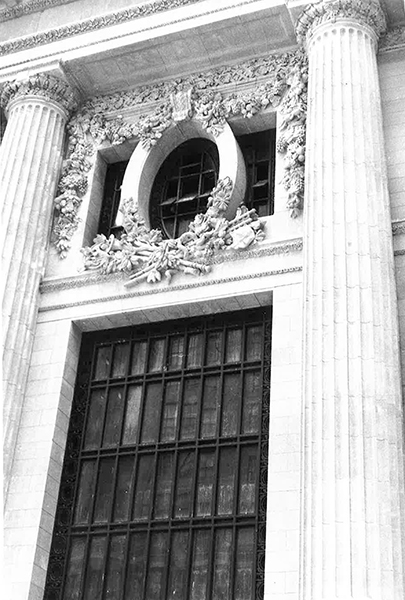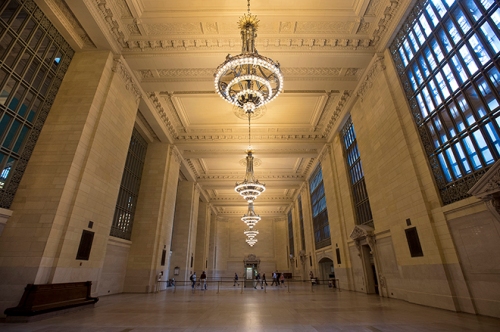
Peter Syrett, Chair of the Health Product Declaration Collaborative, announces the launch of the HPD V1.0 from the Greenbuild Expo floor. Dwayne Fuhlhage photo
In this guest post, PROSOCO’s Sustainability and Environment Director Dwayne Fuhlhage offers a look at the state of materials and chemical disclosure and avoidance, and transparency in labeling heading into 2013.
The Year of Living Transparently
by Dwayne Fuhlhage, CHMM; Sustainability and Environment Director
Welcome to 2013! Are you ready for emerging building sustainability trends?
The annual US Green Building Council (USGBC) Greenbuild conference in San Francisco capped off 2012 with a preview of some major trends and memes for this year and beyond:
1. The sustainable building movement is already a prime player in building and community resiliency. USGBC and its partners will be part of the conversation on taking resilience to the next level.
2. What is inside building products matters and the design community will begin scrutinizing content through transparency oriented standards like the Health Product Declaration (HPD). The LEED ratings system will reward transparency and select chemical avoidance by a yet-to-be-finalized mechanism in new Materials and Resources credits in LEED V4 and through new Pilot Credits.
3. Despite rumors to the contrary and aggressive lobbying on the part of some chemical industry players, the LEED ratings system will continue to be a prominent trendsetter in the push towards improved building performance.
As a member of the LEED Indoor Environmental Quality Technical Advisory Group (IEQ TAG) and participant in the Health Product Declaration (HPD) pilot project, I’ve had the privilege of seeing the debate on materials and chemical disclosure and avoidance play out in real time over the last year and a half.

Author Dwayne Fuhlhage (right) takes a minute to smile for the camera with fellow volunteer members of the LEED Indoor Environmental Quality Technical Advisory Group at Greenbuild.
To say this involves a diverse set of stakeholders is an understatement. The discussions were at times loud and fractious, but we collectively had the same goal of improving communication on the presence of hazardous materials in construction products.
The LEED V4 Materials and Resources credit approach will be settled between now and membership balloting later this year. This credit will be a big deal as LEED V4 is phased in project by project through 2015 and it is currently available in the form of a Pilot Credit. In the meantime, I’m going to let you in on a little secret:
Chemical disclosure and avoidance is already here.
Shortly before Greenbuild, the HPD working group incorporated as a non-profit and became the HPD Collaborative of which PROSOCO is a Founding Sponsor.
We’re in good company with design and specification firms including HDR, PERKINS+WILL, Turner, CANNONDESIGN, boora architects, Gensler, SERA, HOK, and SKANSKA among others.
You can see the list and support the Collaborative at http://www.hpdcollaborative.org/support.
These firms have taken a leadership position that will be emulated by others. Google has claimed this project as one of its own through sponsorship of the HPD Collaborative and a grant of $3 million to the USGBC for policy research on chemicals of concern.
Seriously, if any of these decision makers requests Health Product Declarations as a condition for specification, how will manufacturers react? Will they respond by saying “I don’t want your business”? Some might, but I think they would be outliers. The HPD is set to become the new normal in a relatively short time.
This should not imply that HPD preparation will always be easy. Manufacturers must pick apart every component of every raw material to find out what is inside. Communication through the supply chain is a challenge, with many suppliers having their own intellectual property priorities. Supply chains change and some raw materials have component variability.
Intellectual property is a difficult discussion topic between finished product manufacturers and transparency advocates as well. PROSOCO’s default position will be to increase transparency on chemicals of concern while maintaining key bits of information on functional ingredients as intellectual property in accordance with the Uniform Trade Secrets Act. That sounds like legalistic, weasel wording, but pay close attention to the phrase “chemicals of concern”.
The core list of chemicals of concern comes from Clean Production Action’s GreenScreen tool http://www.cleanproduction.org/Green.php.
From my perspective, prioritizing disclosure of chemicals of concern is the right approach as it gives innovative manufacturers some space to create better technologies without losing their competitive edge.
Beyond that, I think it appropriate for coatings and sealants manufacturers to be able to highlight their efforts to eliminate chemicals of concern. As an example, PROSOCO has systematically eliminated California Proposition 65 chemicals whenever possible over the last fifteen years. This has been a priority in creating the Consolideck® finished concrete flooring product line from the ground up.

Prove it — Rick Fedrizzi, Founder of USGBC, shares his perspectives on proving performance and health characteristics of building products at the USGBC 2012 Opening Plenary at Greenbuild.
The policy behind chemical avoidance priorities is a long way from being settled. The debate will continue and it will likely be contentious.
Some common materials, including crystalline silica and titanium dioxide, are listed as chemicals of concern absent the context of only being toxic by inhalation of fine particles. On the other hand, some technologies only exist because of legacy chemicals that are rapidly falling out of favor. Manufacturers dependent on legacy chemicals are putting up a good fight. Regardless, I think the broad usage of Health Product Declarations will help separate the wheat from the chaff.
There are a lot of “green” products on the market that don’t look so green once we strip off the marketing veneer. As an example, I look forward to our competitors openly divulging the need to use solvents to dilute their products before application. We need a level playing field and building professionals and owners deserve accurate information.
Consolideck® products will be the first in PROSOCO’s lineup to received HPD chemical reviews as designers are most concerned with occupied space. This is in conjunction with PROSOCO’s implementation of an enterprise level software tool, the WERCS, for producing new OSHA Globally Harmonized System (GHS) conformant Safety Data Sheets (SDS).
The GHS regulation requires a total revamp of the former MSDS and professional use product labels by June, 2015. You will see the first batch of SDSs in the near future.
This combined effort would be a challenge for manufacturers of any size and has set a high bar for PROSOCO’s staff in its 75th year. We’re committed to making this work because, frankly, we need to live with our specifying customers.
Additional Reading:
Sustainable Industries on trends for 2013: http://sustainableindustries.com/articles/2013/01/green-building-watch
BuildingGreen on the Google grant: http://www.cleanproduction.org/Green.php
LEEDUser forum on LEED V4: http://www.leeduser.com/blogs/leed-v4-public-comment-forum-leed-takes-new-direction
PROSOCO’s coverage of Greenbuild 2012 on Storify: http://storify.com/John_at_PROSOCO/the-building-envelope-at-greenbuild-2012
About the Author
Dwayne Fuhlhage is the Sustainability and Environment Director for PROSOCO. He is a member of USGBC’s LEED Indoor Environmental Technical Advisory Group (IEQ TAG) where he serves as the coatings and sealants subject matter expert and participates in the drafting and maintenance of LEED standards. He has been involved in AIM VOC rulemaking activities at the district, state and federal level and is an active member of related ACA and CSPA committees. Dwayne is a member of the greener chemistry oriented NSF/GCI 355 ANSI Joint Committee and a Liaison member of the NSF/UL ANSI Health Based Emissions Standard Joint Committee.













